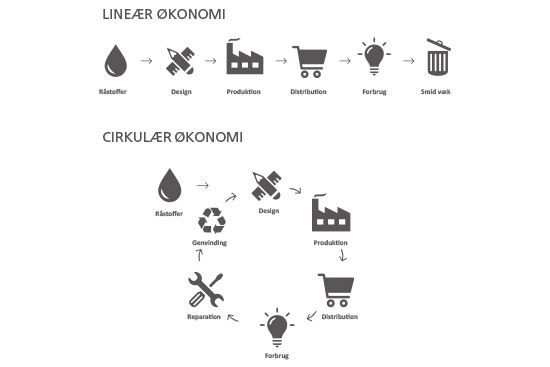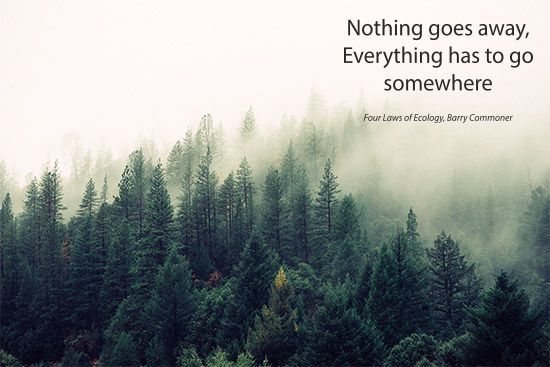a sustainable and responsible model
CIRCULAR ECONOMY
What is circular economy?

From linear to circular thinking
For many years, humans have had a linear lifestyle, where raw materials are extracted, products are manufactured, they are consumed and finally thrown away. Many resources are lost, and our planet is depleted of resources over time. Therefore, we need to think differently to future-proof our common raw materials.
Circular economy is the answer! Circular economy is a sustainable and responsible model where products are redesigned to be reused in an eternal cycle, so that no resources are lost and the materials retain their value. The concept is also called “cradle to cradle” and the vision is clear; products designed within this mindset must help to have a positive effect on the environment, people and our economy.
We will do away with linear thinking and work purposefully towards creating products that can be combined with a circular economy. We do this by delivering products with a long lifespan, which can be upgraded as needed, and with few components that can be recycled properly.
Circular economy & ECOLITE
A sustainable cycle
As a supplier of LED lighting, sustainability has always been part of our DNA. We want, in collaboration with our customers, to make a difference for green development in Denmark and in the long term the rest of the world. That is why, among other things, we have created a product series that is based on the principles of circular economy; ECOLITE. For us, ECOLITE is the first step towards creating a sustainable cycle with the materials that are part of our products' value chain.
Circular economy is not only about looking forward, but also about the correct disposal or recycling of previously used materials. As part of LITE's circular strategy, we are helpful in documenting the effect of the environmental measures when replacing traditional light sources with ECOLITE. Together with our partner, we ensure that old luminaires are disassembled and recycled correctly.
The product is also made up of very few elements that can be easily disassembled. The idea is that all components can be easily replaced or repaired if something breaks. Defective components are sent for recycling, in order to enter a new value chain.
The 10 commandments for a sustainable circular economy

Aalborg University (AAU), in collaboration with European partners, has developed 10 ambitious circular economy proposals to clarify the three main aspects of circular economy; environmental, social and economic. The three main aspects of a circular economy strategy cannot stand alone, and a good circular economy strategy must be developed based on the entire value chain cycle.
We have chosen to share the 10 tips from Aalborg University's news archive, as we believe that the dissemination of knowledge about the circular economy is the way forward - so that producers and consumers gain insight, understanding and, not least, the importance of the circular economy.
- Think circularly already in the design phase of products, services and business models.
- Think in functionality instead of products.
- Analyze where values are created and disappear to understand how they can be maintained.
- Any circular solution must also be sustainable.
- Work from a lifecycle perspective so that you don't just move problems somewhere else or create new problems.
- Involve stakeholders in the value chain in developing new solutions.
- Take the lead and take responsibility – be a good example for others.
- Understand how your new, circular solution changes or requires new practices for users.
- Make the circular solution attractive to users and be part of the solution rather than part of the problem.
- Consider social aspects in the solution, and see if the solution can create local jobs.


